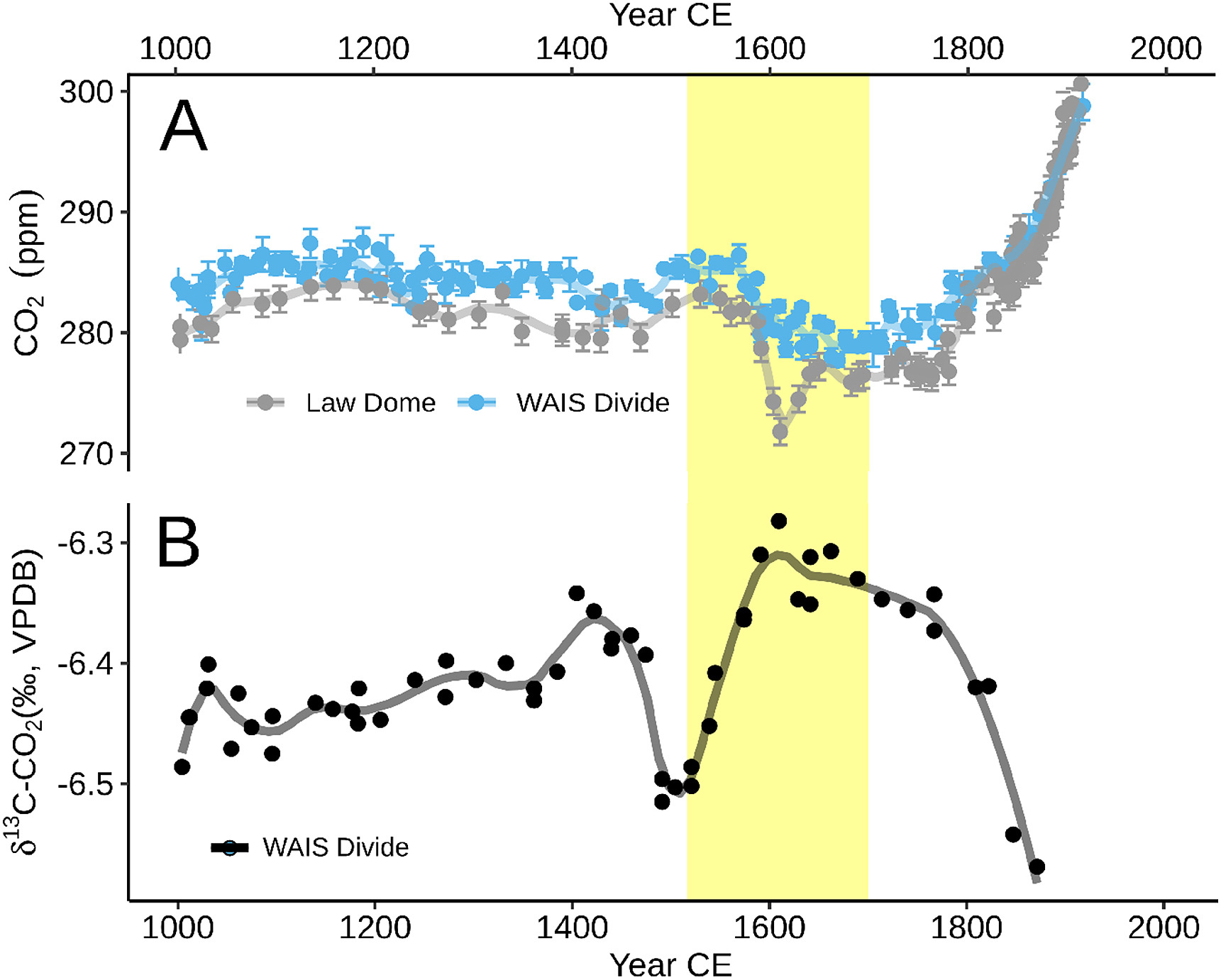Earth system impacts of the European arrival and Great Dying in the Americas after 1492
Germs from Europeans arriving in the Americas from 1492, caused the native American population to die in large epidemics. With the loss of 90% of the human population, much of the agriculture land turned back into forests.
These forests acted as a large carbon capture sink reduced the Earth’s temperature significantly causing a mini ice age / cold spell.
A comprehensive paper drawing on many previous papers in this area. Link here: https://doi.org/10.1016/j.quascirev.2018.12.004
The arrival of Europeans in the Americas in 1492 CE marks the onset of disease epidemics resulting in the loss of the majority of indigenous people living in the Americas over the subsequent century (Berlinguer, 1993; Cook, 1998; Crosby, 1972, 1976; Nunn and Qian, 2010). Indigenous land use was widespread before European arrival, particularly in Mexico, Central America, Bolivia and the Andes where terraced fields and irrigated agriculture was practised (e.g. Abrams and Nowacki, 2008; Chepstow-Lusty and Jonsson, 2000; Heckenberger et al., 2003; Hunter and Sluyter, 2015; Whitmore and Turner, 1992), and across Amazonia where diverse pre-Columbian land uses left its traces in the composition of contemporary Amazon forests (Clement et al., 2015; Levis et al., 2017; Maezumi et al., 2018a; Watling et al., 2018). Thus the Great Dying of the Indigenous Peoples of the Americas (Wolf, 1982) after 1492 CE likely led to a reduction in land use. Fields and fallow areas then underwent secondary succession and in many cases increased carbon stocks as they reverted towards similar prior states – with local, regional and potentially global consequences for the Earth System.
The uptake of carbon on the abandoned anthropogenic lands after European contact may have been large enough to impact the atmospheric CO2 record (Dull et al., 2010; Faust et al., 2006; Lewis and Maslin, 2015; Nevle and Bird, 2008; Nevle et al., 2011; Ruddiman, 2005). Furthermore, at the same time high-resolution Antarctic ice-core records of atmospheric CO2 concentration show an anomalously large decline of ∼7–10 ppm (Ahn et al., 2012; MacFarling Meure et al., 2006) beginning in the 1500s with a minimum in the early 1600s (Fig. 1). Isotope analysis shows that the anomaly was driven by an increase in the terrestrial carbon sink (Fig. 1B, Bauska et al., 2015; Francey et al., 1999; Trudinger et al., 1999). Hence, the carbon uptake that is thought to have occurred following the arrival of epidemics in the Americas may have reduced atmospheric CO2 levels and led to a decline in radiative forcing that may then have contributed to the coldest part of the Little Ice Age(Faust et al., 2006; Neukom et al., 2014)
More on climate
Paper on temperature impact on human capital
Nassim Taleb on climate risk
https://www.thendobetter.com/investing/2017/9/18/nassim-taleb-climate-change-risk

